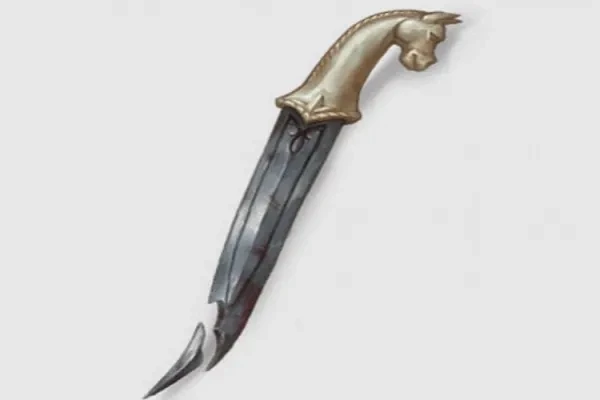
There are times when a Pathfinder must travel lightly. Some cannot carry a huge load. Your sorcerors for example. In times like this, you need light weapons.
10. Gauntlets
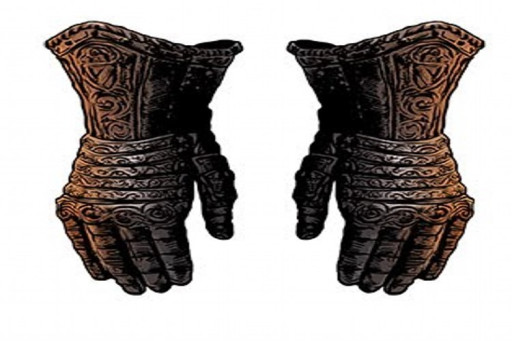
While this is more of a fighter weapon, having secondary weapons is always helpful. Things can go wrong in a fight. Particularly when dealing with a homebrew GM who likes to counter players’ strength.
In this case, a grappling enemy or an enemy that uses some kind of physical restraint will make it hard for someone who relies on two-handed weapons. If you’re not good at escaping checks, the most you can do is whack at it until it loses interest. Or until your party members kill it.
Luckily this is built into medium and heavy armor so you don’t need to purchase them separately. A fighter should use these as a secondary weapon in case your access to your first weapon is taken away.
This weapon is good for fighters and champions because:
- It comes free with armor that they tend to use. Meaning they don’t have to spend extra money on their secondary weapon.
- It can be used freely. If they’re grappled they can still attack.
- It does lethal damage. Normally unarmed attacks are non-lethal.
This can be bought with common medium or heavy armor.
- Price 2 sp;
- Damage
- 1d4 B;
- Bulk L
- Hands 1
- Category Simple
- Group Brawling
9. Daggers
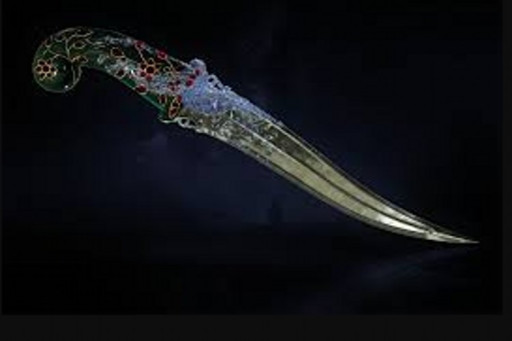
Do you need a secondary weapon to complement your two-weapon fighting style? Or do you need an extra weapon in general? Consider the dagger.
This weapon is great for rogues since it’s a finesse weapon. It can be easily concealed, which is great for social situations. And casters can wield them and provide flanking opportunities for rogues.
A caster should always have one of these in case a monster tries to get in reach of him. That way a rogue can provide a flanking bonus. An archer should also carry them for the same reason. And they’re handy for two-weapon fighting.
Everyone can use a dagger because:
- They provide support for the rogue. Even if your character only has it drawn but never uses it, it still counts for flanking.
- A “face” character can easily conceal it. It’s better to have a weapon on hand if a social encounter goes badly.
- They’re finesse weapons. Dexterity-based classes can do more damage.
They can be bought or created with the character.
Dagger stats:
- Price 2 sp;
- Damage 1d4 P;
- Bulk L
- Hands 1
- Category Simple
- Group Knife
8. Dagger Pistol
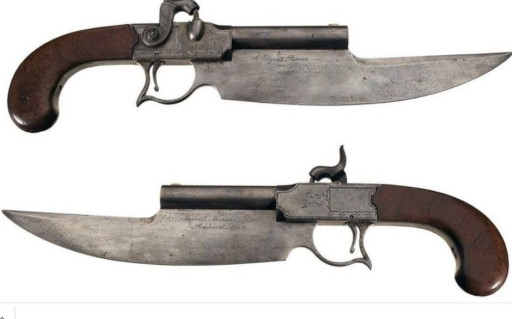
Daggers are great. But if you’re creating a character from an area where guns are common, why not try the dagger pistol? All the fun of shooting a guy and the fun of stabbing him.
This weapon is a hybrid weapon. It can be used at close or mid-range, It carries the features of both. It’s also versatile, dealing bludgeoning and slashing damage.
This weapon can be used as a standard pistol but when an enemy gets up close, you can stab them. You can also change the critical effects depending on what you’re doing. This is a good finesse weapon.
This is a good weapon for rogue and gunslinger hybrids because:
- It’s a finesse weapon. Its accuracy is based on dexterity rather than strength.
- It’s versatile. It can be used as a close or mid-range weapon.
- Having two different ways to do damage is helpful. Many enemies have resistances to work around.
This can be ought in regions where guns are common or creating a character from these areas.
Dagger pistol stats- Price 8 gp;
- Bulk L
- Hands 1
- Category Martial
7. Crescent Cross
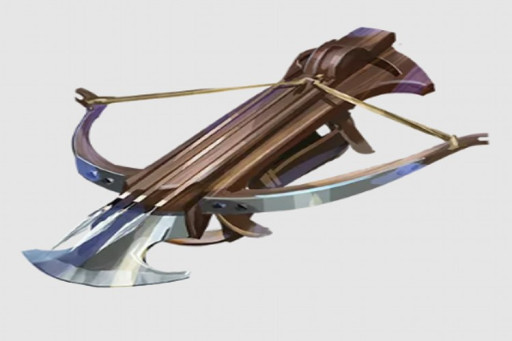
Crossbows are great. However, defensive-wise they leave a lot be desired. And they can only load one bolt. But adding a scizore to it can increase its capabilities. Introducing the crescent cross.
The crescent cross is a combination of a scizore and a crossbow. It can load up to three bolts. It can also parry enemy attacks or be used as a melee weapon.
A strength-based ranger can get good use out of this weapon. Not only do you have the ability to fire multiple shots in a round, you can also parry. Having some extra AC is good if someone tries to close the distance on you.
The crescent cross is good for rangers because:
- It can get off multiple shots in a round. If you do the 2 attack then move strategy, that’s 2d12 damage.
- It can be used in melee This is good if you’re forced into close-quarters combat.
- It can parry. This increases a Ranger’s low AC.
- This weapon can be found in most shops or built with the character.
Crescent Cross stats:
- Price 8 gp;
- Bulk L
- Hands 1
- Category Martial
6. Shortsword
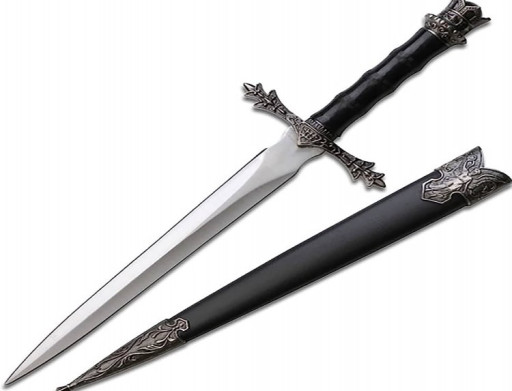
The short sword is a staple of rogues and other dexterity-based classes. It’s a great finesse weapon. And it’s a great choice for two-weapon fighters.
Short swords allow for more freedom of movement. A rogue can use a dagger as a second weapon or he have a potion handy. You may also choose to use a small shield.
You can use them best as a two-weapon rogue or ranger. It’s not a weapon that requires complex strategy. Just take advantage of its finesse trait,
This is great for rogues and rangers because:
- It has finesse. It’s great for dexterity classes.
- It’s good for duel-wielding. This is good for classes that use two-weapon abilities.
- It’s a good beginner weapon. It doesn’t require a lot of complex strategy to use.
This can be created at character creation or bought.
Short sword stats:
- Price 9 sp;
- Damage 1d6 P;
- Bulk L
- Hands 1
- Category Martial
- Group Sword
5. Main-Gauche
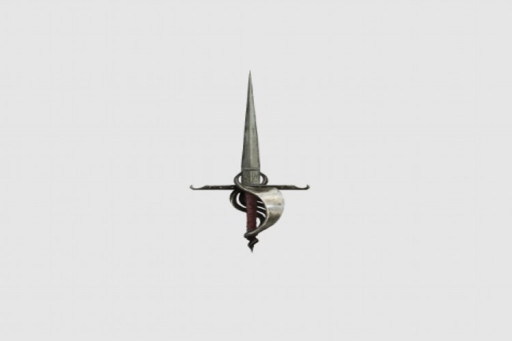
The main-gauche is a special type of dagger. It has some great defensive abilities that make it a good weapon for rogues. Particularly if used as a secondary weapon.
For starters, it can disarm opponents. If you invest in your athletics, this will be a major opportunity for you. It can also be used to parry.
This is best used by rogues. You should flank with fighters with the attack of opportunity feat. When you disarm an opponent, he might try to pick up his weapon. That will allow for an attack of opportunity.
The main-gauche is good for rogues because:
- It can disarm opponents. Depriving them of their primary weapon is a great defensive strategy.
- Parrying raises your defense. This is good for rogues because they are lightly armored.
- It is a finesse weapon. It improves accuracy with rogues.
It can be bought at a shop or created with a character.
Main-gauche stats:
- Price 5 sp;
- Damage 1d4 P;
- Bulk L
- Hands 1
- Category Martial
- Group Knife
4. Polarizing Mace
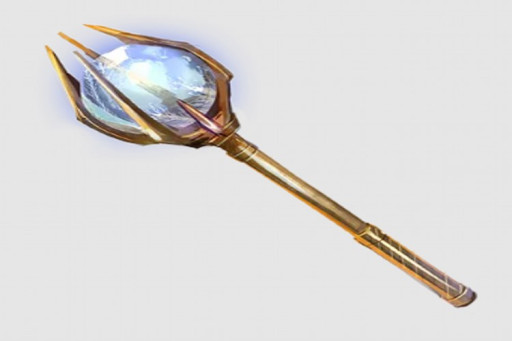
A mace is a good simple weapon. It can be a good alternative for clerics. A polarizing mace has an interesting effect/
When someone wields a grounding spike, the polarizing mace can use this mace to send a bolt of lightning between it and the spike. This sends an electric shock through anything in its path. While it does take some setup, it’s a neat effect.
Otherwise, this functions as a normal light mace. This is best used by rogues or clerics. It has the finesse and shove abilities. The former is good for rogues and the latter may get more use out of the shove if they’re a strength build.
The polarizing mace is good for rogues, wizards, and clerics because:
- It has a cool effect. The lightning attack does 4d12 damage. And it does shock damage.
- It has finesse. It makes it more accurate.
- The shove ability can protect wizards. Pushing enemies out of melee range can help.
- This is a magic weapon so it can be found in a rare weapon shop.
- Polarizing Mace stats:
- Price 950 gp
- Usage held in 1 hand;
- Bulk L
3. Boarding Axe
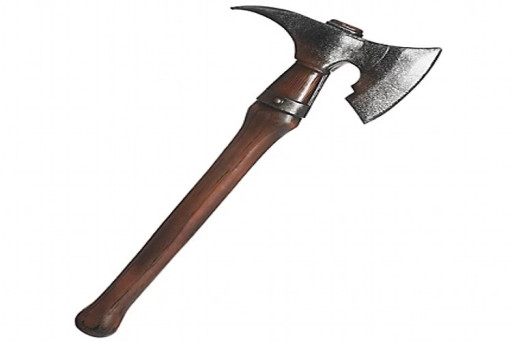
For those on the high seas, you might need a boarding axe. It’s thematically appropriate. Plus it’s good for fighters and champions.
The boarding axe can use piercing or slashing. This is handy since the high seas have powerful enemies. You can also fight with a shield.
You should use the boarding axe with a shield. Or try dual-wielding. Otherwise, use it with a shield as an alternative to a sword and shield combo.
The boarding axe is good for fighters because:
- It’s great to use with a shield. It improves a fighter’s defense.’
- You can use the boarding axe while climbing. It’s a niche use but it’s a good thing to have.
- The weapon has uses with environmental hazards. It’s description says it’s meant in part for removing debris so the GM could take liberties.
It can be bought or created by a character from the high seas region.
Boarding Axe stats- Price 1 gp;
- Damage 1d6 S;
- Bulk L
- Hands 1
- Category Martial
2. Flyssa
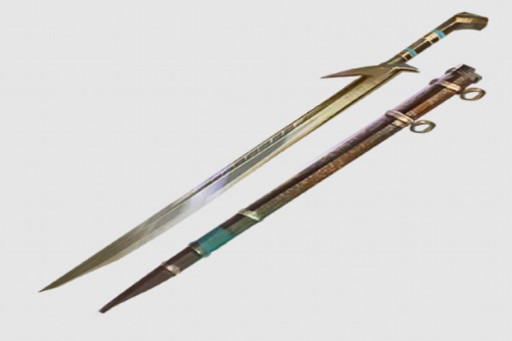
Flyssas are bigger daggers. As such, it does a bit more damage. However, they aren’t easily concealed.
The flyssa is a finesse weapon. Flyssas are good options for rogues and rangers They’re good and lighter than rapiers. So it will be easy to travel light.
Rogues should use their sneak attack ability as often as possible. Get into flanking position as often as possible. As a rogue, you should try to go first as often as possible.
Flyssas are good for rogues because:
- It is a dexterity-based weapon. So you use the dexterity stat to determine if you hit.
- It lets you travel light. Rogues often have to watch how much they’re carrying.
- It pairs well with daggers or main gauches. It can be a main hand weapon.
Flyssa stats:
- Price 1 gp; Damage 1d6 S; Bulk L
- Hands 1
- Category Martial
- Group Knife
1. Hand Crossbow
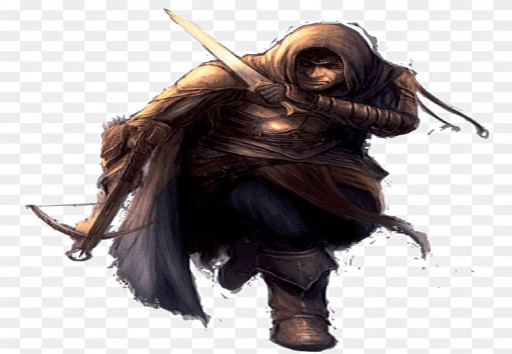
While there are many weapons, few weapons are as versatile as the hand crossbow. Regardless of what class you play, it’s always good to have one. Particularly if you’re class without a large carrying capacity.
The hand crossbow is often used to deal with aerial enemies. Particularly the low-level enemies. Sometimes spellcasters need to conserve their spells after all.
One of the primary uses of the hand crossbow is in the secondary capacity. Some monsters don’t like to touch the ground. If a fighter can’t hit an enemy, the fight will take longer.
This is best for all classes because:
- Aerial enemies are a favorite of GMs who see parties get too comfortable with ground encounters. It’s always good to have a ranged weapon on hand.
- They save spells. Smaller flying creatures don’t need to be handled by big spells when everybody’s attacking.
- Going first with a crossbow is good for a rogue. They can get within range and fire for a sneak attack instead of getting into melee.
These can be found at any store or created with the character.
Hand crossbow stats:
- Price 3 gp;
- Damage 1d6 P;
- Bulk L
- Hands 1;
- Range 60 ft.; Reload 1
- Category Simple
- Group: Bow
- Ammunition Bolts
